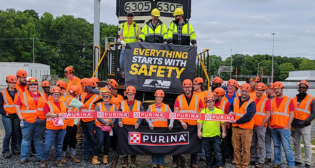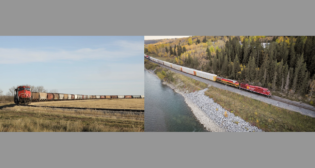
Commentary
‘Railroad Happy Hour’ Report: Volumes Falling Short, Service Improving
Written by Jason Seidl, Matt Elkott, Elliot Alper and Uday Khanapurkar, TD Cowen
At TD Cowen’s latest “Railroad Happy Hour,” leaders in the rail and logistics market said they continue to face a soft volume environment, though service improvements are a step in the right direction. Multiple panelists at the event noted that intermodal pricing was under significant pressure. Mixed expectations on peak season leave us increasingly cautious on the near-term volume outlook.
Commentary is a negative for U.S. railroads and intermodal marketing companies J.B. Hunt Transport Services and Hub Group.
Among our key event takeaways:
- Panelists discussed how the U.S. rail network continues to fall short on volume expectations, though modest top-line growth is coming from pricing. Intermodal pricing, however, is seeing significant pressure compared to the rest of the business units, though inflationary pressures are easing. The U.S. Class I’s appear to be improving their service quality, and the newly combined Canadian Pacific Kansas City should “shake things up” with early but positive signs. Expectations for a normal peak season were mixed, with one panelist suggesting an early peak season while another suggested a normalization not occurring until Chinese New Year in 2024.
- Panelists concurred that rail service, though improved compared to last year and moving in the right direction, remains poor by pre-pandemic standards across the network. Improvement in reported metrics were attributed primarily to lower volumes with multiple panelists noting erratic and uncommon handling of cars. While Class I’s have made progress on hiring, a significant proportion of the labor force is brand new, suggesting that genuine operational improvements are yet to be achieved. With service metrics nominally recovering at a time when freight demand outlook is soft and TL rates are low, we remain cautious on service-related benefits to rail volumes in the near term.
- According to our industry experts, domestic intermodal rates are down 10%-15% for existing customers, and as much as 25%-30% in order to win new customers. The railroads have finally been responsive to pricing (led by CSX and Norfolk Southern has now followed), which has marginally helped them, but they were slow to adjust when comparing to the more fluid trucking market. According to a panelist, large players such as J.B. Hunt have been aggressively lowering rates in certain lanes, which has made it increasingly difficult for other intermodal providers to be competitive. On the retail side, customers have slowed down quite a bit, with some green shoots within discount retail.
- The rail equipment market remains tight with a participant from a large railcar manufacturer noting that the Class I’s are still unable to fully meet their equipment needs. High scrap prices resulted in significant reductions in covered hopper and mill gondola fleets, which now need to be replaced with new cars. Lease rates for covered gondolas are reportedly two-to-three-times higher than pre-pandemic levels. The participant highlighted that labor and parts inflation continues. Supply of railcars in the network is also potentially imperiled by nationalization fears in Mexico where approximately 70% of new cars are manufactured. Continued near-term tightness is expected in this market.



